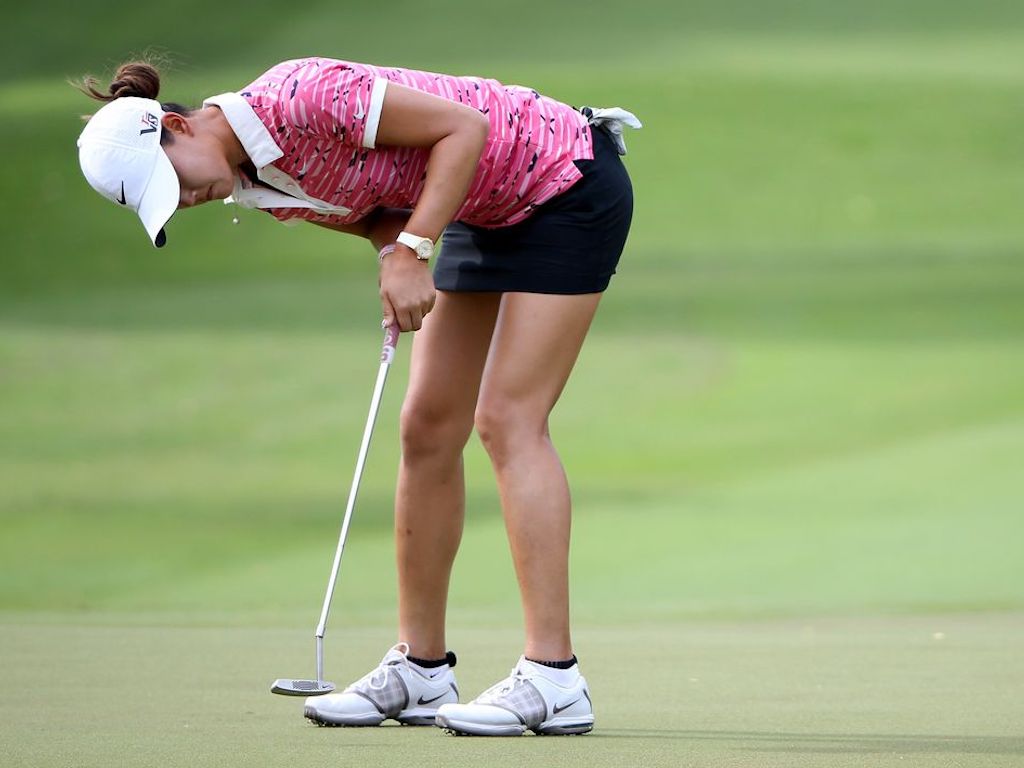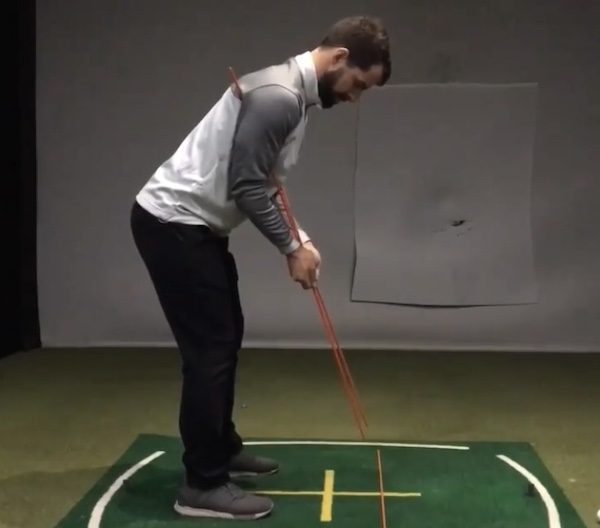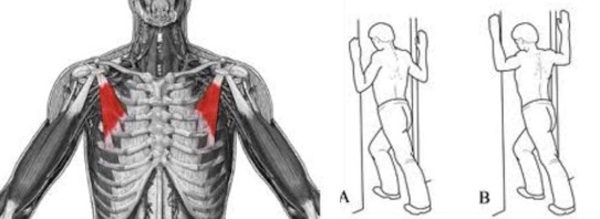Instruction
Does posture really matter in putting?

This article is co-authored with James Jankowski. James is a specialist putting coach to over 100 professional golfers and has worked with around 1000 recreational golfers. You can check out his website here and instagram page here.
When it comes to the motion we produce when putting, the fewer moving parts we have, the easier it becomes to control the putter. From a mechanical standpoint, I try to get golfers forgetting about how or where the putter is moving, and more about the movement of their body. Good body biomechanics will ensure the putter travels where it needs to, without much conscious control.
For me, it seems obvious that the most consistent way to putt would be using a technique that limits the amount of rotating parts of the body, to just one if possible. This one moving part should be in a central position in relation to the rest of our body (more on that later) and aligned with where the shaft plane points for most golfers (see image below). Therefore, where better to control the putting motion than our thoracic spine, specifically the middle/upper section, vertebrae T3 – T6 (approximately).

Thoracic spine aligned with where the shaft plane points
So, if our main driver of motion is our mid to upper back, then it makes sense that overall spinal posture plays a hugely important role. Good posture encourages a stronger and more stable upper body, better connection with the arms and body (shoulder stability and control), plus a greater ability for us to rotate through our thoracic spine. When poor posture limits our ability to turn properly we will often find an alternative way to control the motion. Most of the time, the stroke becomes a swing of the arms, with disconnection from the body and more difficulty in controlling the putter.
So how can we improve our posture for putting?
Firstly, through general improvement of our own natural posture with gym work and posture based exercises. One good example for golfers, especially those who work in an office, is ensuring their pec minor muscles aren’t too tight. Stretching this muscle (doorway stretch as pictured is a great one) and/or self-massage with a tennis or massage ball will help keep it in a lengthened state. Golfers should also consider strengthening the muscles around the shoulder and scapula to help hold them in better posture automatically.

Pec Minor and the doorway stretch
Secondly, I feel many golfers do not understand the feeling of good posture and how to maintain it throughout the putting stroke (or the golf swing for that matter). For this reason, I have started using the Gravity Fit TPro in so many of my lessons, often leading to fantastic results and dramatic improvements. It provides golfers with feedback on the correct position and posture at both setup and throughout the motion. Rather than bore you too much with the written detail, I would like to instead share a couple of examples, both using data collected using the excellent CAPTO system to demonstrate improvements. For those that haven’t heard of Capto, it is the latest in putting analysis software, measuring all putter parameters imaginable.
Example 1 – Before – with the golfer in poor posture, they were forced into an arm swing type motion, with a high amount of face rotation and poor control of acceleration. You will see the center of rotation at the top of the arms and a center that isn’t very stable (green ball is larger in size.) Following some education of better posture using the TPro, the very first stroke was captured. The improvements were instant. A center of motion (based on the plane of the putter) now at the thoracic spine, increased stability (green ball smaller) and face rotation decreased dramatically. All of this on the very first putt!

Example 1 – Posture Improvements
Example 2 – Before – poor control of acceleration in the putter. The golfer found it difficult to control both the amount of acceleration and also its application within the stroke. Following some education of posture using the TPro, plus some rehearsals of the correct motion, the golfer was able to smoothly accelerate at the correct points in the stroke, showing a remarkable improvement in their acceleration profile. On the graph seen here, the ‘perfect’ acceleration profile would follow the green line. You will see here how much closer the golfer was to achieving this.

Example 2 – Acceleration Improvements
This is what the difference between the two setups and strokes might look like in the flesh
The above examples demonstrate how a putting stroke can improve dramatically when we focus on controlling the movement from the thoracic spine (instead of from the shoulders and arms). The Gravity Fit TPro was a critical aspect in making that change, due to the instant feedback it provided on posture and also movement quality. I’ve also seen this approach scale up to short game and full swing in exactly the same way.
You can check out James’ great putting content on a number of different mediums:
The equipment featured can be found here for GravityFit or here for CAPTO. James is more than happy to field inquiries on CAPTO systems by email
- LIKE27
- LEGIT2
- WOW3
- LOL2
- IDHT1
- FLOP4
- OB3
- SHANK32
Instruction
Clement: Laid-off or perfect fade? Across-the-line or perfect draw?

Some call the image on the left laid off, but if you are hitting a fade, this could be a perfect backswing for it! Same for across the line for a draw! Stop racking your brain with perceived mistakes and simply match backswing to shot shape!
- LIKE0
- LEGIT0
- WOW0
- LOL0
- IDHT0
- FLOP0
- OB0
- SHANK1
Instruction
The Wedge Guy: The easiest-to-learn golf basic

My golf learning began with this simple fact – if you don’t have a fundamentally sound hold on the golf club, it is practically impossible for your body to execute a fundamentally sound golf swing. I’m still a big believer that the golf swing is much easier to execute if you begin with the proper hold on the club.
As you might imagine, I come into contact with hundreds of golfers of all skill levels. And it is very rare to see a good player with a bad hold on the golf club. There are some exceptions, for sure, but they are very few and very far between, and they typically have beat so many balls with their poor grip that they’ve found a way to work around it.
The reality of biophysics is that the body moves only in certain ways – and the particulars of the way you hold the golf club can totally prevent a sound swing motion that allows the club to release properly through the impact zone. The wonderful thing is that anyone can learn how to put a fundamentally sound hold on the golf club, and you can practice it anywhere your hands are not otherwise engaged, like watching TV or just sitting and relaxing.
Whether you prefer an overlap, interlock or full-finger (not baseball!) grip on the club, the same fundamentals apply. Here are the major grip faults I see most often, in the order of the frequency:
Mis-aligned hands
By this I mean that the palms of the two hands are not parallel to each other. Too many golfers have a weak left hand and strong right, or vice versa. The easiest way to learn how to hold the club with your palms aligned properly is to grip a plain wooden ruler or yardstick. It forces the hands to align properly and shows you how that feels. If you grip and re-grip a yardstick several times, then grip a club, you’ll see that the learning curve is almost immediate.
The position of the grip in the upper/left hand
I also observe many golfers who have the butt of the grip too far into the heel pad of the upper hand (the left hand for right-handed players). It’s amazing how much easier it is to release the club through the ball if even 1/4-1/2″ of the butt is beyond the left heel pad. Try this yourself to see what I mean. Swing the club freely with just your left hand and notice the difference in its release from when you hold it at the end of the grip, versus gripping down even a half inch.
To help you really understand how this works, go to the range and hit shots with your five-iron gripped down a full inch to make the club the same length as your seven-iron. You will probably see an amazing shot shape difference, and likely not see as much distance loss as you would expect.
Too much lower (right) hand on the club
It seems like almost all golfers of 8-10 handicap or higher have the club too far into the palm of the lower hand, because that feels “good” if you are trying to control the path of the clubhead to the ball. But the golf swing is not an effort to hit at the ball – it is a swing of the club. The proper hold on the club has the grip underneath the pad at the base of the fingers. This will likely feel “weak” to you — like you cannot control the club like that. EXACTLY. You should not be trying to control the club with your lower/master hand.
Gripping too tightly
Nearly all golfers hold the club too tightly, which tenses up the forearms and prevents a proper release of the club through impact. In order for the club to move back and through properly, you must feel that the club is controlled by the last three fingers of the upper hand, and the middle two fingers of the lower hand. If you engage your thumbs and forefingers in “holding” the club, the result will almost always be a grip that is too tight. Try this for yourself. Hold the club in your upper hand only, and squeeze firmly with just the last three fingers, with the forefinger and thumb off the club entirely. You have good control, but your forearms are not tense. Then begin to squeeze down with your thumb and forefinger and observe the tensing of the entire forearm. This is the way we are made, so the key to preventing tenseness in the arms is to hold the club very lightly with the “pinchers” — the thumbs and forefingers.
So, those are what I believe are the four fundamentals of a good grip. Anyone can learn them in their home or office very quickly. There is no easier way to improve your ball striking consistency and add distance than giving more attention to the way you hold the golf club.
More from the Wedge Guy
- The Wedge Guy: Golf mastery begins with your wedge game
- The Wedge Guy: Why golf is 20 times harder than brain surgery
- The Wedge Guy: Musings on the golf ball rollback
- LIKE87
- LEGIT13
- WOW6
- LOL1
- IDHT0
- FLOP4
- OB1
- SHANK8
Instruction
Clement: Stop ripping off your swing with this drill!

Not the dreaded headcover under the armpit drill! As if your body is defective and can’t function by itself! Have you seen how incredible the human machine is with all the incredible feats of agility all kinds of athletes are accomplishing? You think your body is so defective (the good Lord is laughing his head off at you) that it needs a headcover tucked under the armpit so you can swing like T-Rex?
- LIKE0
- LEGIT2
- WOW2
- LOL0
- IDHT0
- FLOP0
- OB0
- SHANK2
-

 19th Hole2 weeks ago
19th Hole2 weeks agoDave Portnoy places monstrous outright bet for the 2024 Masters
-

 19th Hole4 days ago
19th Hole4 days agoJustin Thomas on the equipment choice of Scottie Scheffler that he thinks is ‘weird’
-

 19th Hole2 weeks ago
19th Hole2 weeks agoTiger Woods arrives at 2024 Masters equipped with a putter that may surprise you
-

 19th Hole4 days ago
19th Hole4 days ago‘Absolutely crazy’ – Major champ lays into Patrick Cantlay over his decision on final hole of RBC Heritage
-

 19th Hole2 weeks ago
19th Hole2 weeks agoTwo star names reportedly blanked Jon Rahm all week at the Masters
-

 19th Hole1 week ago
19th Hole1 week agoReport: LIV Golf identifies latest star name they hope to sign to breakaway tour
-

 19th Hole2 weeks ago
19th Hole2 weeks agoNeal Shipley presser ends in awkward fashion after reporter claims Tiger handed him note on 8th fairway
-

 19th Hole1 week ago
19th Hole1 week agoBrandel Chamblee has ‘no doubt’ who started the McIlroy/LIV rumor and why
















RBImGuy
Apr 24, 2019 at 2:53 pm
waste of space
Mark
Apr 6, 2019 at 2:47 am
How is this different from the proven approach of keeping the hands and arms quiet and simply rocking the shoulders around the spine?
Scott
Apr 6, 2019 at 1:53 am
This is a click bait add for a product. Wasted my time
Sal
Apr 5, 2019 at 7:12 pm
Tell Ben Crenshaw.
Bob Jones
Apr 5, 2019 at 6:52 pm
This is an internal focus approach that research is showing to be backwards. See the research of Gabrielle Wulf at UNLV.
geohogan
Apr 8, 2019 at 11:15 am
The putter is a lever, like every golf club.
Impact of a putt is 1/1000 second for a distance of 1/4 inch.
Why would we use our strongest back and core muscle and so much torso movement when such a minuscule amount of force is required for such a brief duration.